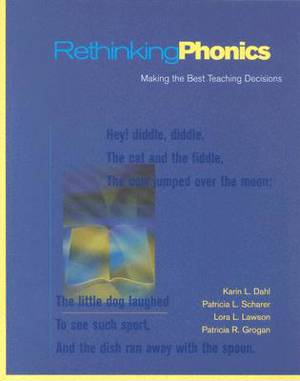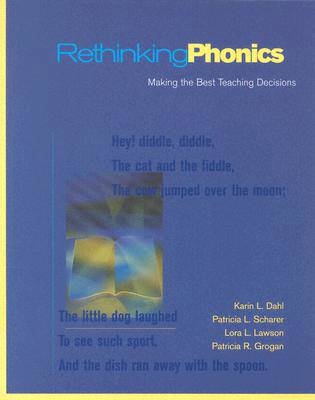
- Afhalen na 1 uur in een winkel met voorraad
- Gratis thuislevering in België vanaf € 30
- Ruim aanbod met 7 miljoen producten
- Afhalen na 1 uur in een winkel met voorraad
- Gratis thuislevering in België vanaf € 30
- Ruim aanbod met 7 miljoen producten
Rethinking Phonics
Making the Best Teaching Decisions
Karin Dahl, Patricia L Scharer, Lora Lawson, Patricia R GroganOmschrijving
That's why--unlike books on traditional phonics teaching--Rethinking Phonics emphasizes the making of sound instructional decisions based on the unique needs of individual students. And because children learn many concepts as they read and write each day, it concentrates on phonics-in-context, rather than on traditional, stand-alone phonics. In short, it explains embedded phonics instruction: what it is, how it works, and how to do it.
Since a critical component of phonics instruction is selecting the most appropriate lessons--for whole-group, small-group, or individual settings--Rethinking Phonics presents a variety of proven-effective activities that teachers can use. These activities, along with other examples, come from an in-depth study of highly successful phonics instruction in eight exemplary first-grade classrooms. The classrooms' nine master teachers describe the decisions they made before, during, and after shared reading from big books, charted stories and songs, quality children's literature, writing demonstrations, writing conferences, word study, and project work.
Each chapter provides valuable insight into teachers' decisions to plan phonics instruction based on their students' specific needs, rather than on the old skill-and-drill routines. The book reveals six basic principles for effective phonics instruction, explores the vital role of assessment in making instructional decisions, and devotes a chapter on how to help children who struggle with phonics and reading.
Specificaties
Betrokkenen
- Auteur(s):
- Uitgeverij:
Inhoud
- Aantal bladzijden:
- 160
- Taal:
- Engels
- Reeks:
Eigenschappen
- Productcode (EAN):
- 9780325003566
- Verschijningsdatum:
- 19/03/2001
- Uitvoering:
- Paperback
- Formaat:
- Trade paperback (VS)
- Afmetingen:
- 189 mm x 233 mm
- Gewicht:
- 285 g

Alleen bij Standaard Boekhandel
Beoordelingen
We publiceren alleen reviews die voldoen aan de voorwaarden voor reviews. Bekijk onze voorwaarden voor reviews.









